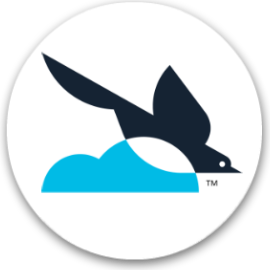Server Side Swift using Vapor
Dimitri Tsiflitzis
7L International
Let's learn how to build and host our very first backend application using Vapor 4.
What is Vapor?
- Vapor is an open source web framework.
- It can be used to create RESTful APIs, web apps, and real-time apps using WebSockets.
- Vapor provides an ORM, a templating language, and a plethora of packages to facilitate user authentication and authorisation.
Release history
| Releases | ||
|---|---|---|
| Version | Release date | Swift version |
| 1.0 | Sep 15, 2016 | ≥ 3.0 |
| 2.0 | May 17, 2017 | ≥ 3.1 |
| 3.0 | May 4, 2018 | ≥ 4.1 |
| 4.0 | April 9, 2020 | ≥ 5.2 |
| 5.0 | TBD | ≥ TBD |
Curated list of Vapor projects
Honorable Mentions



Kitura
Installing Vapor
- xcode 9.0+
- run swift --version (should be 5.0+)
# macOS
brew install vapor/tap/vapor
# linux
eval $(curl -sL https://apt.vapor.sh)
sudo apt-get update
sudo apt-get install vaporHello Vapor
vapor new myProject
cd myProject
// open xcode & runHello Vapor
import Vapor
let app = try Application(.detect())
defer { app.shutdown() }
app.get("hello") { req in
return "Hello, world."
}
try app.run()The architecture of a Vapor application
Run
- The project is separated into two targets.
- The first one is App and the second one is Run.
The architecture of a Vapor application
App
- Backend application code lives here.
- It's a library package. It can be imported into the Run target.
The architecture of a Vapor application
Config
- In the configure.swift file you can customise your application.
- Register all the various services, middleware, set the router object, database connections etc
The architecture of a Vapor application
Routes
- The routes.swift file is where you can add the routes for your router.
The architecture of a Vapor application
Controllers
- Controllers are code organization tools.
- Group related API endpoints together.
- The router connects the endpoints by using this controller
- The controller will query (create, request, update, delete) the appropriate models using the database connection.
The architecture of a Vapor application
Models
- Vapor has a database abstraction tool called Fluent.
- Models represent database entries usually related to this Fluent library.
- In the sample project the Todo class defines the name of the database scheme as a static property.
- Each field in the table has a corresponding property in the entity.
The architecture of a Vapor application
Migrations
- Vapor 4 has added support for database migrations.
- You can alter your database for the introduction of a new field or any other database alteration.
The architecture of a Vapor application
Tests
- Vapor 4 includes a new testing framework called XCTVapor.
- This framework makes easier to test your application with just a few lines of code.
- The Tests folder you'll some basic test already setup. ✅
Tips & tricks for using to Vapor 4
- Use a custom working directory in Xcode - otherwise DerivedData will be used (a terrible place)
Tips & tricks for using to Vapor 4
Using system provided directories
func configure(_ app: Application) throws {
print(app.directory.workingDirectory)
print(app.directory.publicDirectory)
print(app.directory.resourcesDirectory)
print(app.directory.viewsDirectory)
//...
}Tips & tricks for using to Vapor 4
You can pass your secrets to a Vapor application by using environment variables. .env files! 🎉
func configure(_ app: Application) throws {
let variable = Environment.get("EXAMPLE") ?? "undefined"
print(variable)
print(app.environment.name)
print(app.environment.arguments)
print(app.environment.commandInput)
if app.environment.isRelease {
print("production mode")
}
//...
}Tips & tricks for using to Vapor 4
Change port number and hostname
func configure(_ app: Application) throws {
app.http.server.configuration.hostname = "127.0.0.1"
app.http.server.configuration.port = 8081
//...
}Tips & tricks for using to Vapor 4
Router parameters
app.get("hello", ":world") { req -> String in
let param = req.parameters.get("world") ?? "default"
return "Hello, \(param.capitalized)!"
}How to deploy & host your Swift server?
E.g. On AWS
- You can use a T2.nano instance completely FREE for 1 year.
- Instances are prepared super fast and you'll have a linux machine on AWS
How to run a Vapor 4 project using Docker?
The generated project will also include both a Dockerfile and a docker-compose.yml file
# Build image
FROM vapor/swift:5.2 as build
WORKDIR /build
COPY ./Package.* ./
RUN swift package resolve
COPY . .
RUN swift build --enable-test-discovery -c release -Xswiftc -g
# Run image
FROM vapor/ubuntu:18.04
WORKDIR /run
COPY --from=build /build/.build/release /run
COPY --from=build /usr/lib/swift/ /usr/lib/swift/
COPY --from=build /build/Public /run/Public
ENTRYPOINT ["./Run"]
CMD ["serve", "--env", "production", "--hostname", "0.0.0.0"]How to run a Vapor 4 project using Docker?
The Dockerfile separates the build and run process into two distinct images. 🐋
docker build -t vapor-image .
# simply run the container instance & bind the port
docker run --name vapor-server -p 8080:8080 vapor-image
# run the instance, bind the port, see logs remove after exit (CTRL+C)
docker run --rm -p 8080:8080 -it vapor-image